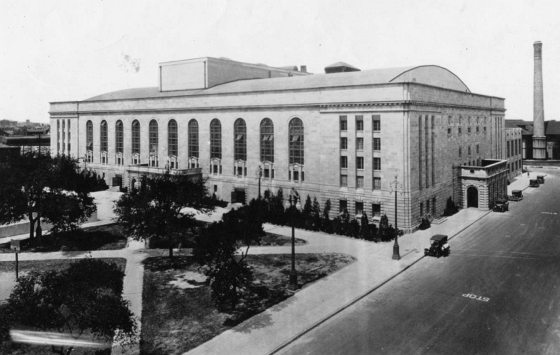|
Today in New Orleans History |
|
|
May 30



On November 30, 1926, property tax payers of New Orleans voted to approve the sale of $2,000,000 in public improvement bonds
to fund the construction of a “Municipal Auditorium or Convention Hall.” A few months later, the Commission
Council adopted ordinance 9472 CCS (January 12, 1927) establishing the Municipal Auditorium Commission, which was charged
with identifying the site for the construction, architects and engineers to design and construct the building, furnishings.
The commission was also to administer and oversee the operations of the auditorium, once it opened. The Commission
was comprised of 9 members (required to be qualified voters and property tax payers) appointed by the mayor with the advice
and consent of the Commission Council. The membership was increased in 1950 to 11 members. The mayor himself also served
ex-officio. The members served terms of 1, 2, 3, 4, 5, 6, 7, 8, or 9 years (10 and 11, after 1950) without compensation,
with the Mayor designating the term of each member and naming the Chairman. The Commission was authorized to appoint
officers, create committees as necessary, and to establish whatever rules and regulations it needed in order to conduct
its business. It was also authorized to “select and employ such necessary persons to carry out the purposes for which
it [was] created.” The Commission met quarterly, but meetings could be held at any time on the written request
of any three members or on the call of the Chairman or mayor. It was also to make quarterly reports to the Mayor and Council
concerning its activities and its future recommendations. The Municipal Auditorium was formally turned over to
the City of New Orleans on January 15, 1930 and was dedicated on May 30, 1930. The building hosted Mardi Gras balls and graduations
for local schools and universities. as well as conferences, conventions, expositions, radio shows, and a wide range of sporting
events including roller derby, ice skating shows, wrestling shows, circuses and gymnastic competitions. The Municipal
Auditorium Commission ceased to exist with the passage of the Home Rule Charter on May 1, 1954. Its functions were more
or less continued by the Municpal Auditorium Advisory Board, which, after December 1955, became the Municipal Auditorium
Advisory Committee. Over the next decade or so, the Advisory Committee's responsibilities and influence seems to have gradually
diminished, and the Auditorium, for all practical purposes, came to be managed by the Department of Property Management
through a Managing Director. It is not clear exactly when the Advisory Committee ceased to exist finally, but it may have
been during the mid-late 1960's, when development of the Cultural Center began. From Wiki: The Morris F.X. Jeff,
Sr. Municipal Auditorium is a 7,853-seat multi-purpose arena in New Orleans, Louisiana, and a component of the New Orleans
Cultural Center, alongside the Mahalia Jackson Theater of the Performing Arts. It is located in the Tremé neighborhood
in Louis Armstrong Park near Congo Square. It was constructed by the contractor George A. Caldwell, who also designed
nine buildings on the Louisiana State University campus in Baton Rouge and three parish courthouses. It hosted
the New Orleans Buccaneers of the American Basketball Association in 1969 and 1970 and also hosted the New Orleans Jazz basketball
team, during its inaugural 1974-1975 season, before the team moved to the Louisiana Superdome. The arena was also home ice
to the minor-league hockey franchise, the New Orleans Brass, from 1997 to 1999, before they moved into the New Orleans Arena.
It has also hosted boxing and professional wrestling matches. The venue was a temporary casino before the new Harrah's
New Orleans building on Canal Street was opened. In August 2005 the auditorium suffered damage from Hurricane Katrina
and associated flooding. Future usage of the arena is currently uncertain.  

To receive an update for each day in New Orleans
history, join our facebook page
- Today in New Orleans History
Tweet
|
|
|

To receive an update for each day in New Orleans history,
join our facebook page - Today in New
Orleans History.
Analytics |


